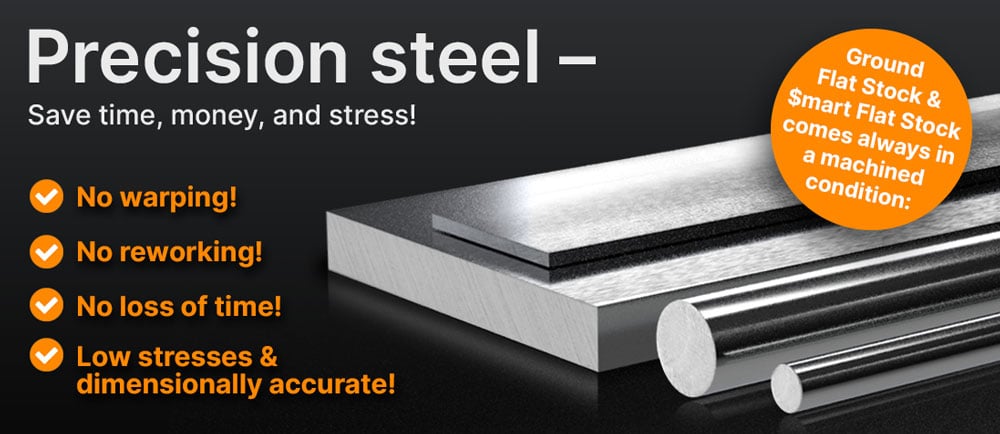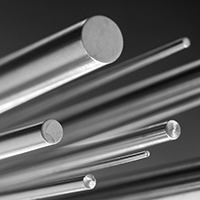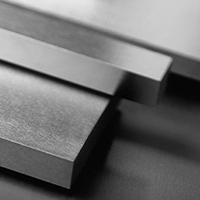Carbon Steel - Low, Medium and High C-Steel
Carbon steel (Plain carbon steel) is an iron-carbon alloy with a carbon content range from 0.05% to 2.1% by weight. It contains a maximum of manganese (1.65 wt.%), silicon (0.6 wt.%) and copper (0.6 wt.%). It does not contain significant amounts of other alloying elements, distinguishing it from alloy steels.
C-steel can be divided into Low, Medium, High and Ultra High based on its carbon content. It is known for its high hardness, strength, and resistance to wear.
C-steel can be divided into Low, Medium, High and Ultra High based on its carbon content. It is known for its high hardness, strength, and resistance to wear.

Your success is our success!
Feel free to contact us.
CLASSIFICATIONS OF CARBON STEEL:
Carbon steel is classified based on its carbon content and other alloying elements, as described in the AISI definition. Each classification serves different industrial needs and applications based on its mechanical properties and characteristics. The primary classifications are as follows:
Low Carbon Steel:
Carbon content: 0.05% to 0.25%.
Characteristics: Soft, ductile, and easily weldable.
Uses: Structural shapes, auto body panels, wire products, etc.
Carbon content: 0.05% to 0.25%.
Characteristics: Soft, ductile, and easily weldable.
Uses: Structural shapes, auto body panels, wire products, etc.
Medium Carbon Steel:
Carbon content: 0.25% to 0.6%.
Characteristics: Higher strength and hardness than low carbon steel but less ductile.
Uses: Gears, axles, railway tracks, etc.
Carbon content: 0.25% to 0.6%.
Characteristics: Higher strength and hardness than low carbon steel but less ductile.
Uses: Gears, axles, railway tracks, etc.
High Carbon Steel:
Carbon content: 0.6% to 1.4%.
Characteristics: Very hard and strong, less ductile, and difficult to weld.
Uses: Cutting tools, springs, high-strength wires, etc.
Carbon content: 0.6% to 1.4%.
Characteristics: Very hard and strong, less ductile, and difficult to weld.
Uses: Cutting tools, springs, high-strength wires, etc.
Ultra-High Carbon Steel (UHCS):
Carbon content: 1.25% to 2.1%.
Characteristics: Extremely hard and brittle.
Uses: Specialized applications like knives, axles, and certain machinery parts (non-industrial-purpose).
Carbon content: 1.25% to 2.1%.
Characteristics: Extremely hard and brittle.
Uses: Specialized applications like knives, axles, and certain machinery parts (non-industrial-purpose).
COMMON GRADES OF CARBON STEEL:
The properties of carbon steels are primarily influenced by the carbon content and the presence of trace amounts of other elements. Common grades of carbon steel are e.g. 1045, 1018, A36 or W1.
Chemical Composition:
1045 Steel
Carbon (C): 0.42-0.5%
Silicon (Si): 0.15-0.4%
Manganese (Mn): 0.60-0.80%
Phosphorus (P): ≤ 0.03%
Sulfur (S): ≤ 0.03%
Carbon (C): 0.42-0.5%
Silicon (Si): 0.15-0.4%
Manganese (Mn): 0.60-0.80%
Phosphorus (P): ≤ 0.03%
Sulfur (S): ≤ 0.03%
1018 Steel
Carbon (C): 0.15 - 0.2%
Silicon (Si): ≤ 0.4%
Manganese (Mn): 0.60-1.2%
Phosphorus (P): ≤ 0.04%
Sulfur (S): ≤ 0.05%
Carbon (C): 0.15 - 0.2%
Silicon (Si): ≤ 0.4%
Manganese (Mn): 0.60-1.2%
Phosphorus (P): ≤ 0.04%
Sulfur (S): ≤ 0.05%
A36 Steel:
Carbon (C): 0.25 - 0.29%
Silicon (Si): ≤ 0.4%
Manganese (Mn): 0.6-1.2%
Phosphorus (P): ≤ 0.04%
Sulfur (S): ≤ 0.05%
Carbon (C): 0.25 - 0.29%
Silicon (Si): ≤ 0.4%
Manganese (Mn): 0.6-1.2%
Phosphorus (P): ≤ 0.04%
Sulfur (S): ≤ 0.05%
W1 Steel
Carbon (C): 0.9-1.05%
Silicon (Si): 0.1-0.25%
Manganese (Mn): 0.3-0.4%
Phosphorus (P): ≤ 0.025%
Sulfur (S): ≤ 0.025%
Chromium (Cr): ≤ 0.2%
Molybdenum (Mo): ≤ 0.1%
Vanadium (V): ≤ 0.1%
Tungsten (W): ≤ 0.2%
Carbon (C): 0.9-1.05%
Silicon (Si): 0.1-0.25%
Manganese (Mn): 0.3-0.4%
Phosphorus (P): ≤ 0.025%
Sulfur (S): ≤ 0.025%
Chromium (Cr): ≤ 0.2%
Molybdenum (Mo): ≤ 0.1%
Vanadium (V): ≤ 0.1%
Tungsten (W): ≤ 0.2%
WHAT IS CARBON STEEL USED FOR?
Carbon steel is used in a wide variety of applications across multiple industries due to its versatile properties. Here are some of the primary uses of carbon steel:
• Manufacturing and Fabrication
• Consumer Goods
• Construction Tools
• Defense and Military
• Construction and Infrastructure
• Industrial Equipment
• Consumer Goods
• Construction Tools
• Defense and Military
• Construction and Infrastructure
• Industrial Equipment
• Manufacturing and Fabrication
• Energy Sector
• Railways
• Agriculture
• Shipbuilding
• Energy Sector
• Railways
• Agriculture
• Shipbuilding
CUSTOMIZED CARBON STEEL
As a steel supplier with no minimum order quantity or value we have been supplying steel to a wide variety of industries and manufacturers in Germany since 2003, Europe since 2011 and now since 2020 across the U.S.A. and Canada.
We pride ourselves in supplying you with precision in tool steel, high speed steel, stainless steel, heat-treatable steel and case hardening steel in 44 steel grades with 83,928 dimensions.



